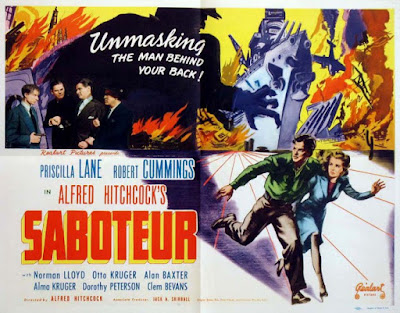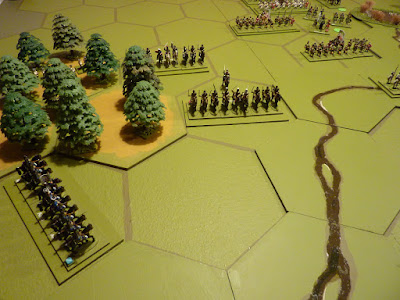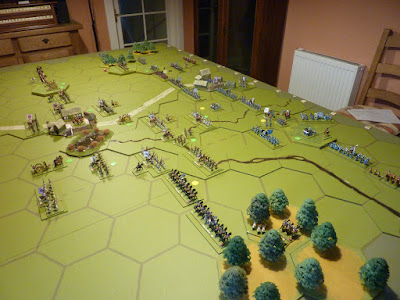Yesterday I got rather sidetracked by the Internet (as one does), and as a result finished up watching a movie on my TV, late in the evening. I have promised myself that I'll have a more productive day today, but I'm getting off to a poor start by writing about the time I wasted yesterday...
So there are two related threads here - the ship and the movie I watched. I'll start off with the ship.
I did some reading about the SS Normandie, a ship I recognise vaguely from old photos, but never really knew very much about. It really is a very odd story - sad, undoubtedly, and filled with some astonishing bad breaks and terrifying incompetence - if you are interested, you can find lots about it online, but here's a quick skim.
Built at St Nazaire, in Brittany, the
Normandie was launched in 1935; it was the biggest, fastest, most technically advanced, most luxurious passenger liner of its day, and this in an age when the big transatlantic liners were at their most prestigious. It's success was tempered a little by a shift in the market - by design, the
Normandie was heavily committed to catering for the very wealthy, and as the 1930s neared their end there was a big upsurge in demand for more economical travel, which gave the British Cunard ships an unassailable advantage.
After the attack on Pearl Harbour, since the USA was now at war with the Axis Powers, and France had become German-occupied territory, the Normandie, which was stranded in New York, was requisitioned by the US Navy (with the full co-operation of its owners), was renamed the USS Lafayette (see what they did there?), and after some dithering about, during which it was briefly proposed to make her into an aircraft carrier (the ship, you understand, was enormous), eventually a plan was produced to convert the vessel into a troopship.
Conversion work was rather rushed, trying to meet a very ambitious commissioning date, and on 9th February 1942 the ship caught fire, at the refit berth at Pier 188, Brooklyn. Sparks from a welding torch set alight a store of kapok-filled life-jackets which were in a passenger saloon, the fire spread rapidly, as a result of inflammable varnished wood panelling not having yet been removed, and, helped by a stiff northeasterly breeze, which blew the blaze along the length of the ship, within about an hour, the three upper decks were engulfed from end to end.
The ship was equipped with a sophisticated fire-fighting system, and lots of appropriate equipment, but the system had been disabled and most of the equipment removed. Further, the NYCFD's hoses did not fit the ship's French connectors. Some valiant, though hopeless, efforts were improvised to fight the conflagration. As water was pumped in from shore-based fire tenders and the port's fire-boats, the ship began to settle in the dock, and took on a list to seaward.
The Normandie's designer was present in New York, since he had been involved in discussions of the refit. He arrived at the dock, with a plan to save the ship, but the harbour police refused him entry. His idea was to go on board, open the sea-cocks to flood the lower hull, allowing the vessel to settle the few feet to the bottom of the dock, which would enable the fire to be put out without risk of capsizing. The Navy commander on the spot, Admiral Adolphus Andrews, rejected this idea.
The authorities eventually declared that the fire was under control, and rescue operations ceased, but some 6,000 tons of water had been pumped on board. Continuing entry of water below the surface resulted in the vessel capsizing later on that night. This had been a major emergency - many individuals were injured, and there was one death. Andrews placed a complete shut-down on all reporting - no press were allowed anywhere near the scene.
Later there were a number of proposal for projects to restore the vessel in some form, but after a lot of wasted time and expenditure the ideas were axed, and the hulk was scrapped in 1946. Since then there have been many theories suggesting mob involvement and so on - interesting, but I'll spare you all that.
While I was reading about this, I learned that the capsized vessel appears in the 1942 Alfred Hitchcock movie, Saboteur. Now, as it happens, I have a big box set of Hitchcock films, which one of my sons gave me for Xmas some years ago, and I was pretty sure this one is included. It is.
Which brings me to my other thread - the movie, which I duly watched last night. In fact I have seen it before, some years ago, but I remembered very little about it (the plot was spoiled rather less for me last night by what I had remembered about it than by what was pretty obviously predictable anyway). The film has a big wartime message about patriotism and public awareness of national security, though there are some odd plot twists involving a wealthy, privileged elite who are masterminding the Fifth Column and sabotage in the US - seems strangely in tune with modern conspiracy theories?
The movie is fun - not a very demanding watch, and is in many ways a film of Great Silliness, not the least of which is a Hitchcock cliché - a climactic ending, set on yet another famous National Monument (yes, AGAIN). I sat up and saluted when I (briefly) saw the wrecked Normandie/Lafayette (or USS Alaska - a battleship, no less, as it is cast in the plot).
OK - so what? Well, so nothing, really, but there is something odd about the dates. If I had been less tired, I am sure I'd have tried to find out a bit more, but I'd had enough by this stage.
Here's the thing - filming took place from December 1941 to February 1942 - not a generous timescale, but there was a war on. The capsizing of the "battleship" is not a strategic high spot of the story, but it is an impressive part of the build up to the finale. Given that the ship only sank in February 1942, I am forced to assume that there was some very fast footwork, and Hitchcock changed the story to include his (prohibited) shots of the Lafayette - I guess that the story was largely patched together as he went along anyway, but that is impressive. As far as I know, none of the conspiracy stories involves Hitchcock commissioning the sinking of one of the biggest ships in the world, to fit into his latest movie, so it must just have been opportunism on his part.
It brought him a lot of grief - his use of illicit shots of a ship, the sinking of which was the subject of a lot of denial, and the hints in the story that the Navy's security and competence might be a tad suboptimal resulted in the movie being "red-flagged" by the censors, though it was allowed to be released because of its positive wartime espionage messages, and was premiered in April 1942. We may assume Admiral Andrews never forgave him, however...


































